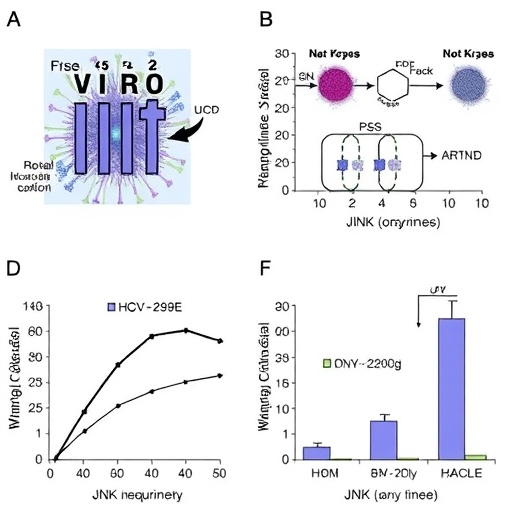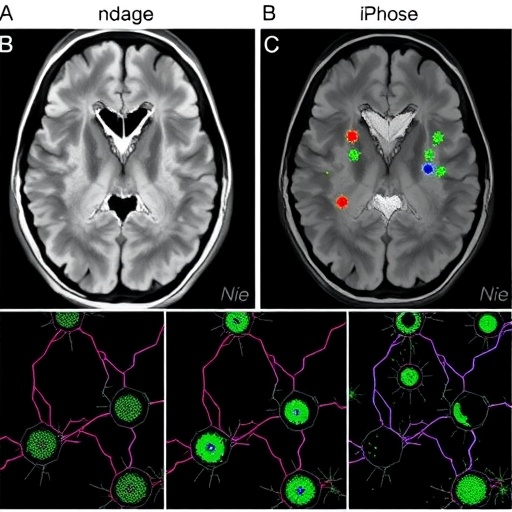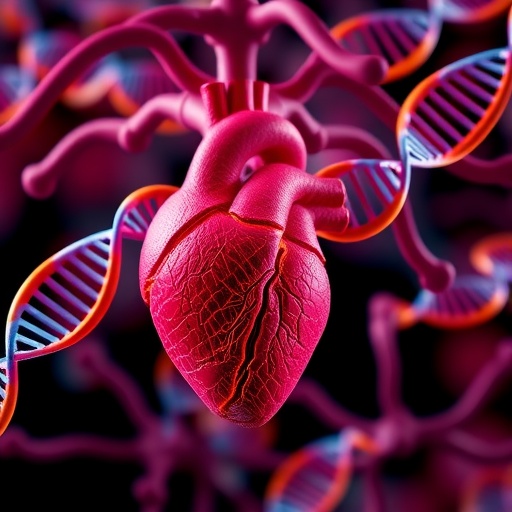In a groundbreaking study published in npj Viruses, researchers have unveiled a critical molecular interaction that sheds light on the replication and pathogenicity of human coronavirus 229E (HCoV-229E). The team, led by Brüggemann, Meister, Heinen, and colleagues, has demonstrated that the c-Jun N-terminal kinase (JNK) plays a pivotal role in modulating the phosphorylation state of the nucleocapsid (N) protein of HCoV-229E. This discovery not only deepens our understanding of coronavirus biology but may also open new avenues for antiviral therapeutic strategies targeting host-virus interactions.
Coronaviruses rely heavily on their nucleocapsid proteins for various stages of their life cycle, including RNA genome packaging, viral assembly, and modulation of host responses. The N protein is highly phosphorylated, and its phosphorylation status affects its function and the virus’s ability to replicate effectively. Prior to this study, the specific kinases responsible for phosphorylating the HCoV-229E nucleocapsid had remained elusive, complicating efforts to disrupt these interactions pharmaceutically. The current research provides compelling evidence positioning JNK as a central kinase orchestrating N protein phosphorylation.
The role of JNK kinase, a member of the mitogen-activated protein kinase (MAPK) family, has been extensively studied in the context of cellular stress responses and apoptosis. However, its involvement in viral phosphorylation dynamics adds a new dimension to our understanding of viral-host interplay. The authors meticulously delineated how JNK selectively targets the N protein, modifying multiple phosphorylation sites that are essential for its structural conformation and functional versatility. These phosphorylation events potentially influence how viral ribonucleoproteins engage with the viral RNA and assemble into virus particles.
Experimental results from Brüggemann et al. were derived using an array of biochemical and molecular approaches. Through kinase assays, mass spectrometry, and mutagenesis experiments, they mapped the phosphorylation landscape of the N protein and identified the precise serine and threonine residues phosphorylated by JNK. Their data revealed a phosphorylation pattern that significantly alters the electrostatic properties of the N protein, a finding that explains the changes in RNA-binding affinity and intracellular localization observed in infected cells.
Interestingly, the researchers reported that inhibiting JNK activity disrupted the normal phosphorylation of the N protein, which correlated with reduced viral replication in cell culture models. This functional link underscores JNK kinase not merely as a bystander in viral infection but as an active participant co-opted by HCoV-229E to optimize its replication machinery. This discovery places JNK kinase at the nexus of viral replication and host signaling pathways, emphasizing its potential as a target for therapeutic intervention.
The research also touches upon the dynamic changes in cellular signaling cascades induced by coronavirus infection. It appears that HCoV-229E infection triggers activation of MAPK pathways, including JNK, as part of the host’s response. However, the virus has adapted to harness this activation to enhance its own replication through targeted N protein phosphorylation. This paradoxical manipulation of host kinases underscores the sophistication of coronavirus-host interactions and suggests that modulating these pathways could be a double-edged sword in antiviral drug development.
Moreover, the authors highlight that phosphorylation of the N protein by JNK is likely conserved among other alphacoronaviruses beyond HCoV-229E, suggesting broader implications for understanding coronavirus biology. Given the recurring emergence of coronaviruses with epidemic and pandemic potential, insights into conserved viral-host mechanisms are invaluable. They suggest that targeting N protein phosphorylation could be a strategic point of vulnerability shared across diverse coronavirus strains.
This study also offers a technical advancement in the ability to map viral post-translational modifications with high specificity. The use of tandem mass spectrometry coupled with selective kinase inhibitors provided a robust framework to dissect the molecular interplay between JNK and the N protein. Such methodological rigor ensures that the findings are not only descriptive but also mechanistically insightful, allowing future scientists to build on this foundation with precision.
In the broader context of viral pathogenesis, phosphorylation of viral structural proteins often modulates their interactions with host factors and viral assembly sites. By pinpointing JNK’s role in N protein phosphorylation, the researchers have illuminated one aspect of the viral life cycle that contributes to efficient virion production. This understanding may translate into strategies that impede viral assembly, thereby curtailing viral spread.
Another critical aspect discussed is the potential impact of JNK-mediated phosphorylation on immune evasion. Phosphorylation can influence the N protein’s ability to shield viral RNA from host pattern recognition receptors, thereby dampening antiviral immune responses. Hence, disrupting this phosphorylation may enhance host immunity by making the virus more recognizable to innate defenses such as RIG-I and MDA5.
The study also briefly addresses the challenge of specificity when targeting host kinases such as JNK. While inhibiting JNK can suppress viral replication, it also carries the risk of perturbing essential cellular functions regulated by this kinase. Thus, future drug development would require careful balancing to minimize off-target effects or exploiting viral-specific interactions to achieve selective inhibition.
Looking into the future, Brüggemann and colleagues suggest that more comprehensive in vivo studies are needed to validate the therapeutic potential of targeting JNK-mediated phosphorylation in coronavirus infections. Animal models of HCoV-229E or related alphacoronaviruses will be crucial to assess the efficacy and safety of JNK inhibitors during viral infection. Such studies will provide the translational bridge necessary to move from molecular insights toward clinically relevant treatments.
The findings contribute to a growing body of evidence that host cell kinases are integral to coronavirus replication strategies. Unlike viral enzymes that mutate rapidly, host kinases offer more stable targets for antiviral drugs. This stability could be a crucial factor in overcoming viral resistance. Additionally, the interplay between viral proteins and host kinases reveals a complex regulatory network that viruses exploit to achieve maximal replication efficiency.
In summary, this pioneering work delineates a novel functional axis in coronavirus biology, placing JNK kinase at the heart of N protein phosphorylation. By advancing our molecular understanding of this relationship, the study opens promising vistas for the development of antiviral therapies that target the subtle yet critical modifications of viral structural components. As the world continues to grapple with coronavirus outbreaks, such mechanistic insights become indispensable assets in our fight against these persistent pathogens.
Subject of Research: Role of JNK kinase in regulating phosphorylation of the HCoV-229E nucleocapsid protein
Article Title: JNK kinase regulates phosphorylation of HCoV-229E nucleocapsid protein
Article References:
Brüggemann, Y., Meister, T.L., Heinen, N. et al. JNK kinase regulates phosphorylation of HCoV-229E nucleocapsid protein. npj Viruses 3, 69 (2025). https://doi.org/10.1038/s44298-025-00152-7
Image Credits: AI Generated
Tags: antiviral therapeutic strategiesc-Jun N-terminal kinase functioncellular stress responses and apoptosisHCoV-229E nucleocapsid phosphorylationhost-virus interactions in coronavirusesJNK kinase role in coronavirus replicationkinase interactions in viral life cyclemitogen-activated protein kinase familyphosphorylation dynamics in viral proteinsresearch on coronavirus pathogenicityunderstanding coronavirus biologyviral assembly and RNA packaging





